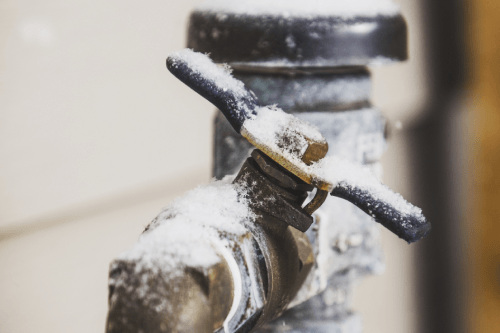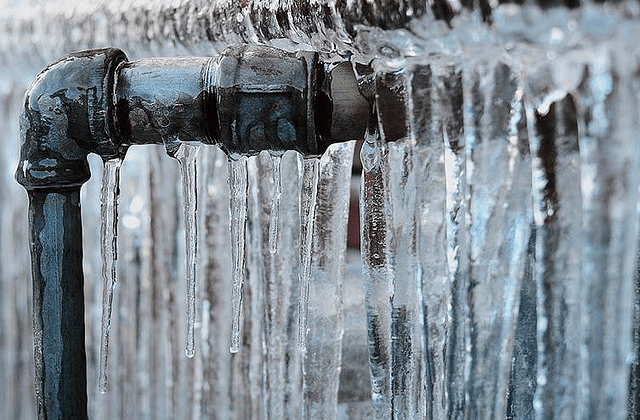The publisher is making several good observations about 6 Ways to Prevent Frozen Pipes as a whole in this content which follows.

Cold weather can ruin your pipes, specifically by freezing pipelines. Right here's how to prevent it from taking place and what to do if it does.
Intro
As temperatures drop, the threat of frozen pipelines increases, possibly leading to costly repair services and water damage. Understanding exactly how to stop frozen pipelines is essential for house owners in chilly climates.
Comprehending Icy Pipelines
What causes pipes to freeze?
Pipelines ice up when exposed to temperatures below 32 ° F (0 ° C) for prolonged durations. As water inside the pipes freezes, it broadens, taxing the pipe walls and potentially creating them to break.
Threats and problems
Icy pipes can cause water system interruptions, building damages, and costly fixings. Ruptured pipes can flood homes and create substantial structural damages.
Indications of Frozen Pipeline
Identifying icy pipelines early can prevent them from breaking.
Exactly how to identify icy pipes
Try to find lowered water flow from faucets, unusual smells or sounds from pipelines, and visible frost on exposed pipes.
Prevention Tips
Insulating susceptible pipes
Wrap pipes in insulation sleeves or make use of heat tape to safeguard them from freezing temperatures. Focus on pipes in unheated or exterior areas of the home.
Home heating strategies
Maintain interior rooms effectively warmed, especially areas with plumbing. Open up cupboard doors to allow cozy air to circulate around pipelines under sinks.
Securing Outside Plumbing
Garden hoses and exterior faucets
Disconnect and drain pipes garden pipes before winter months. Install frost-proof faucets or cover outside faucets with shielded caps.
What to Do If Your Pipes Freeze
Immediate activities to take
If you presume frozen pipelines, keep faucets open up to eliminate pressure as the ice melts. Make use of a hairdryer or towels soaked in hot water to thaw pipes slowly.
Long-Term Solutions
Architectural changes
Take into consideration rerouting pipes away from exterior walls or unheated locations. Include added insulation to attic rooms, cellars, and crawl spaces.
Updating insulation
Buy top quality insulation for pipelines, attics, and walls. Appropriate insulation assists keep regular temperature levels and minimizes the danger of frozen pipes.
Conclusion
Protecting against icy pipelines needs proactive procedures and quick actions. By recognizing the reasons, signs, and safety nets, house owners can shield their plumbing during winter.
6 Proven Ways to Prevent Frozen Pipes and Protect Your Home
Disconnect and Drain Garden Hoses
Before winter arrives, start by disconnecting your garden hoses and draining any remaining water. Close the shut-off valves that supply outdoor hose bibs and leave the outdoor faucet open to allow any residual water to drain. For extra protection, consider using faucet covers throughout the colder months. It’s also important to drain water from any sprinkler supply lines following the manufacturer’s directions.
Insulate Exposed Pipes
Insulating your pipes is an effective way to prevent freezing. Pipe insulation is readily available at home improvement stores and is relatively inexpensive. Pay close attention to pipes in unheated areas such as the attic, basement, crawl spaces, or garage. Apply foam insulation generously to create a buffer against the cold. You can also wrap your pipes in heat tape or thermostat-controlled heat cables for added warmth.
Seal Air Leaks
Inspect your home for any cracks or openings that could let in cold air. Seal any holes around the piping in interior or exterior walls, as well as the sill plates where your home rests on its foundation. Additionally, make sure to keep your garage door closed unless you’re entering or exiting. Leaving it open creates a significant air leak that can lead to frozen pipes.
Allow Warm Air Circulation
During cold snaps, it’s essential to allow warm air to circulate evenly throughout your home. Leave interior doors ajar to promote better airflow. Open kitchen and bathroom cabinets to help distribute heat consistently around the rooms. If you have small children or pets, be sure to remove any household chemicals or potentially harmful cleaners from open cabinets for safety.
Let Faucets Drip
A small trickle of water can make a big difference in preventing ice formation inside your pipes. When temperatures drop significantly, start a drip of water from all faucets served by exposed pipes. This continuous flow helps prevent the water from freezing. Additionally, running a few faucets slightly can relieve pressure inside the pipes, reducing the chances of a rupture if the water inside does freeze.
https://choateshvac.com/6-proven-ways-to-prevent-frozen-pipes-and-protect-your-home/

We had been guided to that editorial on How to Prevent Your Pipes From Freezing from an acquaintance on another blog. Sharing is nice. One never knows, you may be doing someone a favor. I enjoy your readership.
Book A Service
Comments on “Avoiding Pipes from Cold Weather: Best Tips”